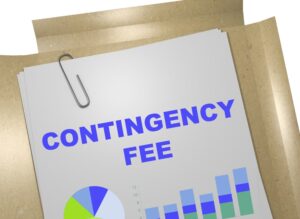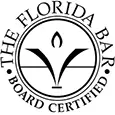What is a Contingency Fee?
Most car accident attorneys use contingency fee agreements, which are contracts between the lawyer and the accident-victim client. In a contingency fee agreement, or CFA, the attorney does not receive payment unless and until they secure compensation for the accident victim—either through a settlement offer from the insurance company or a favorable litigation result. If the accident victim recovers compensation, the lawyer’s fee will be a certain predetermined percentage of the gross recovery amount.
An experienced car accident attorney will explain their CFA to you clearly and answer all your questions. Once you sign the agreement, they can begin handling your case and advocating for your interests – including your right to recover compensation for your accident-related losses.
Get A Free Consultation Today!
Factors that Determine a Contingency Fee Percentage in an Accident Case
A contingency fee is a common payment arrangement between a client and a lawyer, typically in most types of personal injury cases. Instead of paying the lawyer upfront, the client agrees to give the lawyer a percentage of any money recovered through a settlement or court judgment. This fee is contingent upon the lawyer winning the case or reaching a favorable outcome.
Several factors can influence the size of a contingency fee:
- Complexity of the Case – More intricate cases or those requiring extensive research and preparation may lead to higher fees. These cases demand more time and resources from the lawyer, affecting the contingency fee percentage.
- Time and Effort Required – Some traffic accident cases may require prolonged litigation, numerous court appearances, or extensive negotiations. The more time and effort the lawyer invests in the case, the larger the contingency fee might be.
- Risk Involved – If the case is risky or uncertain, lawyers may charge a higher contingency fee percentage to compensate for the potential losses if they do not win. Cases with a lower chance of success may result in higher fees to offset the increased risk.
- Potential Damages – The amount of money at stake in the case can also affect the contingency fee percentage. Cases involving substantial damages or potential for significant compensation may lead to higher fees, as the lawyer’s percentage will amount to a larger sum.
- Experience and Reputation of the Lawyer – Highly experienced lawyers with a successful track record may command higher contingency fees. Clients may be willing to pay more for the experience and reputation of a seasoned attorney more likely to secure a favorable outcome.
- Expenses Incurred – Lawyers often incur expenses while handling a case, such as court fees, expert witness fees, and costs related to investigation and evidence gathering. These expenses are typically deducted from the client’s portion of the settlement or judgment before calculating the contingency fee.
- Location and Legal Market—Contingency fees can vary based on geographical location and prevailing legal market conditions. Lawyers may charge higher contingency fees in regions where demand for legal services is high or where certain types of cases are prevalent.
Understanding these factors can help clients and lawyers negotiate fair contingency fee arrangements that reflect a vehicle accident case’s complexity, risk, and potential outcomes.
Types of Car Accidents and Injuries
 Accident claims stem from the negligence of others, leading to various injuries for victims. Whether it’s a car collision, a truck crash, a motorcycle accident, or a pedestrian accident, the common thread is someone failing to uphold their duty of care while operating a vehicle and causing injuries to another.
Accident claims stem from the negligence of others, leading to various injuries for victims. Whether it’s a car collision, a truck crash, a motorcycle accident, or a pedestrian accident, the common thread is someone failing to uphold their duty of care while operating a vehicle and causing injuries to another.
Car accidents often result from drivers speeding, texting while driving, running red lights, or driving under the influence of alcohol or drugs. These negligent actions can cause severe injuries, such as whiplash, broken bones, traumatic brain injuries (TBIs), and spinal cord injuries. In the worst cases, they can lead to fatalities.
Due to the size and weight of large commercial trucks, accidents involving these vehicles can be especially devastating. Negligence on the part of truck drivers or trucking companies, such as fatigue from driving long hours, improper vehicle maintenance, or overloading trucks, can lead to catastrophic injuries, including crush injuries, amputations, and severe burns.
Motorcycle accidents often occur when other drivers fail to see motorcyclists or yield the right-of-way. Injuries sustained in motorcycle crashes can be severe due to the lack of protection, including road rash, head injuries, and limb amputations.
Bicycle accidents frequently happen when drivers fail to share the road or disregard traffic laws. Cyclists can suffer from broken bones, head injuries, and spinal cord injuries – especially if they strike the ground with a significant amount of force.
Pedestrian accidents occur when drivers fail to yield at crosswalks or drive recklessly in pedestrian-dense areas, such as parking lots and garages. These accidents often result in debilitating injuries like fractures, internal organ damage, and head trauma. Sadly, they can also lead to fatalities.
In all these cases, negligence is the root cause – whether it’s a driver’s failure to obey traffic laws, maintain their vehicle properly, or pay attention to their surroundings. When negligence leads to accidents, victims can seek compensation for their injuries, medical expenses, lost income, pain and suffering, and inconvenience.
How Can a Lawyer Help with an Accident Case?
Car accident attorneys are crucial in helping individuals navigate the insurance claim and litigation processes following an accident. Here are several ways that they can assist you:
- Legal Guidance – Car accident attorneys provide legal guidance from the outset of the case. They explain the client’s rights, options, and legal remedies available under the law.
- Case Evaluation – Attorneys assess the case’s strengths by thoroughly reviewing the accident circumstances surrounding the injury. They evaluate liability, damages, and the likelihood of success in pursuing a claim or lawsuit.
- Investigation – Attorneys conduct thorough investigations to gather evidence supporting the accident victim’s claim. This may involve obtaining witness statements, collecting medical records, analyzing accident reports, and consulting experts, such as accident reconstruction specialists or medical professionals.
- Negotiation with Insurance Companies – Car accident attorneys handle communications and negotiations with insurance companies on behalf of their clients. They advocate for fair compensation and work to maximize the settlement amount to cover medical expenses, lost income, pain and suffering, and other damages.
- Legal Documentation – Attorneys also prepare and file all necessary legal documents and paperwork required to initiate and pursue an accident claim or lawsuit. This includes drafting complaints, motions, and other court filings, as well as responding to requests for information from opposing parties.
- Representation in Court – If they do not receive a favorable settlement offer from insurers, car accident attorneys will represent their clients during court proceedings. They present evidence, examine witnesses, and argue on behalf of their clients to secure a favorable verdict or judgment.
- Extensive Knowledge of Personal Injury Law – Experienced lawyers stay updated on relevant statutes, regulations, and legal precedents, allowing them to navigate complex legal issues and anticipate challenges that may arise during the case.
- Client Advocacy – Car accident attorneys advocate for their clients’ interests throughout the legal process. They prioritize their clients’ needs and work tirelessly to achieve the best possible outcome, whether through settlement negotiations or litigation.
- Emotional Support – Attorneys provide emotional support and reassurance to clients during a stressful and challenging time. They offer guidance, answer questions, and address concerns to alleviate anxiety and ensure clients feel supported throughout the legal proceedings.
By leveraging their legal knowledge, experience, and resources, car accident attorneys help clients navigate the complexities of personal injury claims and lawsuits, ultimately striving to secure just compensation for all accident-related losses.
How to Prove a Personal Injury Claim Involving a Car or Pedestrian Accident
Proving the legal elements of a car or pedestrian accident case involves gathering evidence and demonstrating certain key factors to establish liability and damages:
- Duty of Care – The first element to prove is that the at-fault driver (or defendant) owed a duty of care to the accident victim. In traffic cases, this means drivers have a duty to drive safely and follow all traffic laws. For pedestrian accidents, drivers have a duty to watch out for pedestrians and yield the right-of-way to them at the appropriate times.
- Breach of Duty – The next step is to show that the defendant breached their legal duty of care. This may include actions like speeding, running red lights, texting while driving, or failing to yield to pedestrians.
- Causation – It’s also essential to establish that the defendant’s breach of duty directly caused the accident and resulting injuries. This often requires evidence such as witness statements, accident reconstruction reports, and medical records.
- Damages – Finally, it’s necessary to prove the damages the victim suffered as a result of the accident. These can include medical bills, lost income, pain and suffering, and any other losses incurred.
Many types of evidence can help prove these elements, including:
- Photographs and Videos – Visual evidence of the accident scene, vehicle damage, injuries, and roadway conditions can help to establish exactly what happened.
- Expert Testimony—Accident reconstruction experts, medical professionals, and other experts may testify to explain technical aspects of the case or assess the extent of the victim’s injuries.
- Witness Statements – Eyewitnesses can provide crucial testimony about the events leading up to the accident and who was responsible.
- Medical Records – Documentation of the victim’s injuries, treatment received, and prognosis can demonstrate the severity of the damages suffered.
- Police Reports – Law enforcement officers who respond to the accident scene will often write detailed reports documenting their findings, including any citations issued (and the reasons for those citations).
By carefully gathering and presenting this evidence, attorneys can build a strong case to prove the legal elements of liability for an accident and help victims recover the compensation they deserve.
Recovering Compensation for Your Accident-Related Injuries
 Accident victims may recover various types of compensation to help them cope with injuries and losses incurred due to the accident. Here are the key types of compensation they may seek:
Accident victims may recover various types of compensation to help them cope with injuries and losses incurred due to the accident. Here are the key types of compensation they may seek:
- Medical Expenses – This includes reimbursement for past and future medical bills related to treatment of accident-related injuries. It covers expenses such as hospital stays, surgeries, medications, rehabilitation, therapy, and medical equipment.
- Property Damage – Victims may also be reimbursed for repairing or replacing damaged property, such as vehicles, bicycles, or personal belongings, that were damaged or destroyed in the accident.
- Lost Earnings – Victims may receive compensation for income lost due to their inability to work after the accident. This can include what they lost while hospitalized, undergoing treatment, or attending medical appointments, as well as future lost earning capacity, if injuries prevent them from returning to work or pursuing their previous occupation.
- Loss of Life Enjoyment – Compensation may also be available for the loss of enjoyment of activities and hobbies that the victim can no longer participate in – or enjoy – due to their injuries. This may include sports, hobbies, or socializing with friends and family.
- Pain and Suffering – Compensation may be for the physical pain and emotional suffering endured as a result of the accident and injuries. This can include compensation for the pain experienced during treatment and recovery, as well as ongoing pain and emotional distress that result from permanent injuries or disabilities.
- Loss of Consortium – In cases where the accident results in severe injuries that affect the victim’s relationships with their spouse or family members, compensation may cover the loss of companionship, support, and services the injured party provided.
- Punitive Damages – In cases of extreme negligence or reckless behavior on the at-fault individual’s part, punitive damages may punish the wrongdoer and deter similar future conduct.
By seeking compensation for these various types of damages, accident victims can receive the financial support they need to cover medical expenses, replace lost income, and rebuild their lives after a traumatic vehicle accident.
Speak to an Experienced Car Accident Lawyer in Your Area Today
If you recently sustained injuries in a traffic crash, contact a personal injury attorney in your area right away. The lawyer can explain their CFA, answer your questions, and guide you throughout the insurance and litigation processes.
Because of how a contingency fee works, you never have to worry about the cost of legal representation. You have nothing to lose by learning about your legal rights, so seek a free case evaluation today.
Free Consultation
We Are Here For You 24/7
Reviews
– Elissa M.
“Really pleased with Boohoff Law! Received immediate responses when I had any questions. Treated amazingly by all staff … made this process a true breeze!”
– Caitlyn M.
– Brandy K.
Related Posts
Lowball Offer for Your Totaled Car? What To Do When Your Car Was Totaled and the Insurance Offer Seems Too Low
Wrecked Without a Buckle: Can I File a Claim if I Wasn’t Wearing a Seatbelt in a Car Accident?
Sidelined by a Sudden Door? Figuring Out Who Is Liable in a Dooring Bicycle Accident
Recovery is personal.
We’re here for you.
We’re close by. And if you can’t make it to us, we’ll meet you where you need us, at home or in the hospital.
You're better off with Boohoff.











The information on this website is for general information purposes only. Nothing on this site should be taken as legal advice for any individual case or situation. This information is not intended to create, and receipt or viewing does not constitute, an attorney-client relationship.
available 24/7
(877) 999-9999
